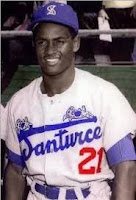The slaves, it
appears, like the poor, we have had always with us. In the Oxford Illustrated
History of Britain there appears a picture of a chain linking five anklets
dating from the Iron Age! In other words, slavery was in effect around 800BC to
60AD. This discovery appears
to say tribal rulers could enslave their own own lowly people, or perhaps those of other
tribes gained through barter or war. One of the most famous tribes was the Iceni, who lived around what is
modern day Norfolk. Which may explain why the Roman invasion was not total in
that area - who has not heard of their famous Queen Boudica?

The Venerable Bede recalls the story of Pope Gregory when he saw fair-skinned,
blue-eyed Anglo-Saxon boys in the slave market in Rome. “Who are these people?”
the Pope asked. “They are Angles,” he was told. “Non Angli sed Angeli, (Not
Angles, but Angels” replied Gregory.)
In December, 1085, William the Conqueror
commissioned the Domesday Book to raise taxes to pay for his army. In effect,
this was a census by which William could determine the exact status and wealth
of his subjects throughout the realm. This minutely detailed volume shows that no
fewer than nine percent of the English were listed as slaves in that year.
Nor were all traders
white. Islamic and African tribes traded in children. In Hugh Barnes’
illuminating The Stolen Prince he outlines the life and times of Abram Petrovich Gannibal. Although the early
part of Gannibal’s life is obscure, he always insisted he was a king’s son, a
prince of Abyssinia. He was captured as
a seven or eight year old by Islamic slave traders and thrust on a ship bound
for Constantinople. He eventually ended up in the court of Peter the Great.

The
Tsar recognised the child’s intelligence, took him first as his godson and then
as his adopted son. Peter arranged for the boy to have the best education
possible in the new capital of Saint Petersburg. The adult Gannibal proved himself
more than worthy of this liberal education. He rose through the ranks as a
soldier, a spy, a diplomat, and a mathematician. Although he fell from favour
in the reign of Peter lll, and was ignored by Catherine after Peter’s
assassination, Gannibal’s heritage lives on. He was the great-grandfather of the
poet Pushkin (Eugene Onedin), and the ancestor of Prince Philip Mountbatten,
Queen Elizabeth’s consort.
Britain was the first
nation to really speak out strongly against slavery. There were many respected
people who spoke out strongly against slavery. One was the missionary doctor,
David Livingstone, (1817-1873) from Blantyre, Scotland. Livingstone’s travels
in Africa, his missionary zeal and his efforts to stop the slave trade in
children are legendary.
 |
| Livingstone meets Stanley - |
In 1836, more than fifteen
years before Harriet Beecher Stowe’s Uncle Tom’s Cabin, the much-
travelled
Englishwoman, Fanny Trollope, published Jonathan Jefferson Whitlaw, the first
anti-slavery novel. I love Fanny’s biography, beautifully written by the
American Pamela Neville-Sington. Dr. Neville-Sington painstakingly, but never
boringl, details Fanny’s richly adventurous life.
However, perhaps the
most famous abolitionist – and a household name in the Scotland of my childhood
– was William Wilberforce. As a young man on his Grand Tour of Europe,
Wilberforce and his friend read William Law’s book, A Serious Call to a Devout
and Holy Life.” Inspired by this, William seriously considered entering clerical
life, but friends persuaded him he could serve God better through politics.
While he was an ardent supporter of parliamentary reform, public education,
overseas missions and religious freedom, Wilberforce’s commitment to the
abolition of slavery and the slave trade was unswerving and perseverant. He
introduced his first anti-slavery motion in 1788. Though this was defeated,
William brought it up every year thereafter until finally, in 1806, eighteen
years after that first motion, the slave trade was finally abolished. Still
Wilberforce pressed against slavery and was rewarded for his tireless campaign
when the abolition bill for all British territories passed four days before his
death in 1833. A year later on, 31st July 1834, 800,000 slaves,
mainly in the British West Indies, were set free. There are several biographies
on William Wilberforce, and one movie, Amazing Grace.
One hundred and
eighty-four years later, we live in a slave-free world – not quite. The most
horrific slavery is carried out today by the Islamic terrorists known as Boko
Haram. Newspapers have carried stories of the murders of Christian men and the
kidnapping of girls from Government Schools in Nigeria. Children see violent
brutality like this on television news; it is difficult to deal with in
classrooms, but to do so with honesty is important. We as librarians can
co-operate with teachers in pointing out to the children appropriate and
interesting books. As teachers, we need to remind them of the many men and women
of times gone past who endured hardship, sometimes even death, and who suffered
censure in their efforts to improve the lives of others and bring an end to
slavery. It would be an interesting project to have the class, in geography and
history, find today’s real heroes and heroines in the Nigerians, the Kenyans,
the Somalis, the Russians, and the beleaguered peoples of the Middle East who
strive day in and day out against all odds for freedom.










